Several tourists love to purchase German beer steins as a souvenir, but are these markings authentic? Beer enthusiasts know that finding authentic German beer steins is hard, and not all know how to recognize them from the numerous cheap copies.
Let’s know how to identify German beer stein markings.
What is a Beer Stein?
Stein is a German word that comes from one of these terms, Stein Krug and Steingut, which means “stone mug” and “stone goods”, respectively. Most common German beer steins are made of silver, glass, earthenware, pewter, and wood.
Beer steins were manufactured in response to the 14th Century bubonic plague. First pieces of beer steins are made after the German principalities passed the law related to sanitary conditions.
Although beer steins were made for sanitary purposes, they still became a status symbol. Commoners use earthenware or porous mugs, while the upper-class use glass, silver, or pewter, which they call tankards.
Manufacturers continue making stoneware drinking steins with pewter lids, and in the 19th Century, beer steins became a product of Europe.
Several types of German beer steins emerged, and artisans carved markings, making them a form of art. Today, most people collect German beer steins, and because of modern technology and accessible materials, beer steins became sophisticated souvenirs.
If you are collecting authentic German beer steins, here are some ways how to determine their authenticity through their markings and identifications.
How to Determine Markings and Identifications
| Marking Type | Description |
|---|---|
| Maker’s Mark | Brewer’s symbol or initials |
| Capacity Mark | Volume measurement indication |
| Year Mark | Production year or date |
| Material Mark | Stein composition information |
| Region Mark | Origin or brewing location |
| Lid Type | Lid style and ornamentation |
| Handle Style | Handle design (ornate, plain) |
| Artwork Theme | Decorative illustrations or motifs |
| Signature Mark | Artist’s or designer’s autograph |
| Rarity Grade | Collectible rarity indication |
| Collector Value | Estimated market value |
| Historical Link | Association with events or figures |
It is overwhelming to see several German beer steins. At a glance, you cannot tell which is authentic or not. You have to look at its markings carefully to ensure it is an authentic German beer stein.
Country of Origin
You can check the base of the beer stein to know where it originates. At the bottom of the stein, the country of its origin shows. You might be anticipating the “Made in Germany” mark, but that does not always happen.
Beer steins with “Made in West Germany” on their bottom were made during the Cold War. You can check the base or sides of the beer steins for their markings. It is often pressed into the clay before it is dried or stamped.
Manufacturer’s Mark
It is a manufacturer’s pride to have a German stein. Besides the country of origin, manufacturing details are seen on the official database. According to the Merchandise Act enacted in 1887, the export stein manufacturers should stamp the county of origin and maker on each mug.
Beer Stein Lid Condition
You can check the age, price, and quality of a beer stein through the appearance and shape of its lid. Lids on original German beer steins are cast from one piece. Check the edges and lid inside. The soft metal in the lid may darken.
The most common lid shapes of German beer steins are ornamental, flat, conical, and inlay lids. Conical lids are the most common and found on the cheapest models, while the ornamental lids are in limited edition steins.
Decorative
The carvings and embellishments on the German beer steins tell a story. The most common illustrations you can see around the beer steins are from historical events, famous wars or battles, and Biblical figures.
A valuable German beer stein has its story to tell. Only classic steins can depict this beauty. A beer stein without any markings or decorative is most likely a cheap and souvenir-manufactured stein.
Handle Bumps
You can feel a bump in the handle on new German beer steins. Those pieces with bumps or grooves on their handles does not worth much. German beer steins manufactured before the 1920s do not have a bump on their handle.
Hand-Paintings
Check the steins for imperfections and raised designs. Interiors of older steins are imperfect, have a slightly raised bottom, and have evident hand-painted colors. You can differentiate mass-produced beer steins. The painted parts look flawless, dull and low-intensity color because it is machine-produced.
Materials
Authentic German beer steins are heavy and made of expensive materials. You can tell that it is real glass, silver, or ivory. Meanwhile, beer steins produced for souvenirs are lightweight and made of low-quality clay.
Types of German Beer Stein Markings
You can see several types of German beer steins, and the most common ones are:
Oldest Known German Steins
The oldest known German beer steins go a long way back to the 14th Century, and they are made of stoneware. Early German steins had only simple and functional designs, and over time became an art form with intricate hand-painted embellishments and designs.
Standard Steins
Before, beer steins do not have a particular shape. The German beer mugs were cylindrical, has a height twice their width, and were decorated with pewter.
In the mid-1800s, the pewter fittings were reduced in size and became rings encircling the lids made of ceramic or glass. By the late 19th Century and early 20th century, German beer steins were produced with hinged lids, keeping the insect out of the drinks or preserving the beer longer.
The standard beer steins were used in Germany for traditional festivals like Oktoberfest. Exclusive designs and styles for Oktoberfest are famous collector’s items.
Glass-Blown Steins
The glass-blown stein is a traditional beer mug, hand-crafted by blowing and shaping molten glass. Even when made with molten glass, it still has intricate designs. You can find glass-blown steins in red, green, or brown.
Beer Stein Lids
Beer stein lids are purposely made to prevent insects from getting into the beer or keeping the drink warm. The stein lids are made of metal, commonly silver or pewter.
It serves as a cover or lid for traditional German beer steins. The lids are removable or hinged and often have intricate designs. Other stein lids have a thumb lever that makes it easy to close and open.
Carved German Steins
This is a sentimental type of German beer stein. They are hand-carved and bold-colored pieces that show folk tales or patriotic scenes from the carvings.
Ivory German Steins
It is rare to find Ivory German beer steins today. These beer mugs are highly decorative, with realistic and detailed human and animal carvings on an ivory-white material that came from a tusk of a walrus or elephant. Everything in this beer stein makes it more valuable and highly appreciated.
Due to the concerns of animal extortion, ivory beer steins are illegal in several countries. Hence, Ivory steins are only sold or traded with special permits.
Mettlach Steins
In the late 19th to early 20th century, a German pottery company in Mettlach, Saarland produced a ceramic beer mug. Until today, the hand-painted stoneware Mettlach beer steins of Villeroy and Boch are known for their high quality, durability, and intricate design.
Popular German Beer Stein Manufacturers
Beer stein manufacturers mark their works with their identifiable marks. You can search on the online database of stein marks, to identify which is yours. German beer steins that are from these well-known manufacturers are quite valuable:
- Villeroy & Boch
- Gerz
- King-Werk
- Zoller & Born
- Marzi and Remy
- Hauber and Reuther
These are some well-known German beer stein manufacturers, but many other companies produce high-quality steins.
Tips on How to Date German Beer Stein
Knowing the manufacturing period of your German beer stein is essential because it dictates its value.
- Check its markings, whether it is made in Germany or Gemacht in Deutschland. These markings were required in export items in 1887.
- No bumps on the handles. Bumps appeared until the 1920s.
- A stein mark that has a “Made in Western Germany” is made between 1949 and 1990.
- Pewter lids that have three or four-part mold were made before World War II.
- Stein numbers that start with 17, 18, and 19 do not necessarily mean the manufacture date.
Value of German Steins
Antique German beer steins are priced from 50 USD to 5,000 USD. Its price is dependent on the condition and information about a particular German beer stein.
An example of this is a 17th Century produced German beer stain that belonged to a family and sold for 1,500 USD for a generation, versus a beer stein manufactured by a well-known brand but does not have any proof is only worth 150 USD.
Some beer steins are limited edition or collector’s items. You can find the maximum number of the produced steins made in the total of the model. The lower the limitation is, the rarer the beer stein is, and the more valuable it becomes.
It is essential to determine the authenticity of the German beer steins to ensure you are sealing a great deal.
Final Takeaway
German beer steins may have been used for drinking beers before, but today, it is a collector’s items.
You will be amazed at how culturally enriching the paints are; and how their decorations tell their story. It is overwhelming to see several beer steins in the market today. You have to carefully inspect the German beer stein markings to ensure a great deal.

As a homebrewer, Michael would get frustrated about the lack of brewing information on the internet. After hundreds of gallons of spoilt batches, Micheal had enough. And he founded Unknown Brewing as a resource for homebrewers.
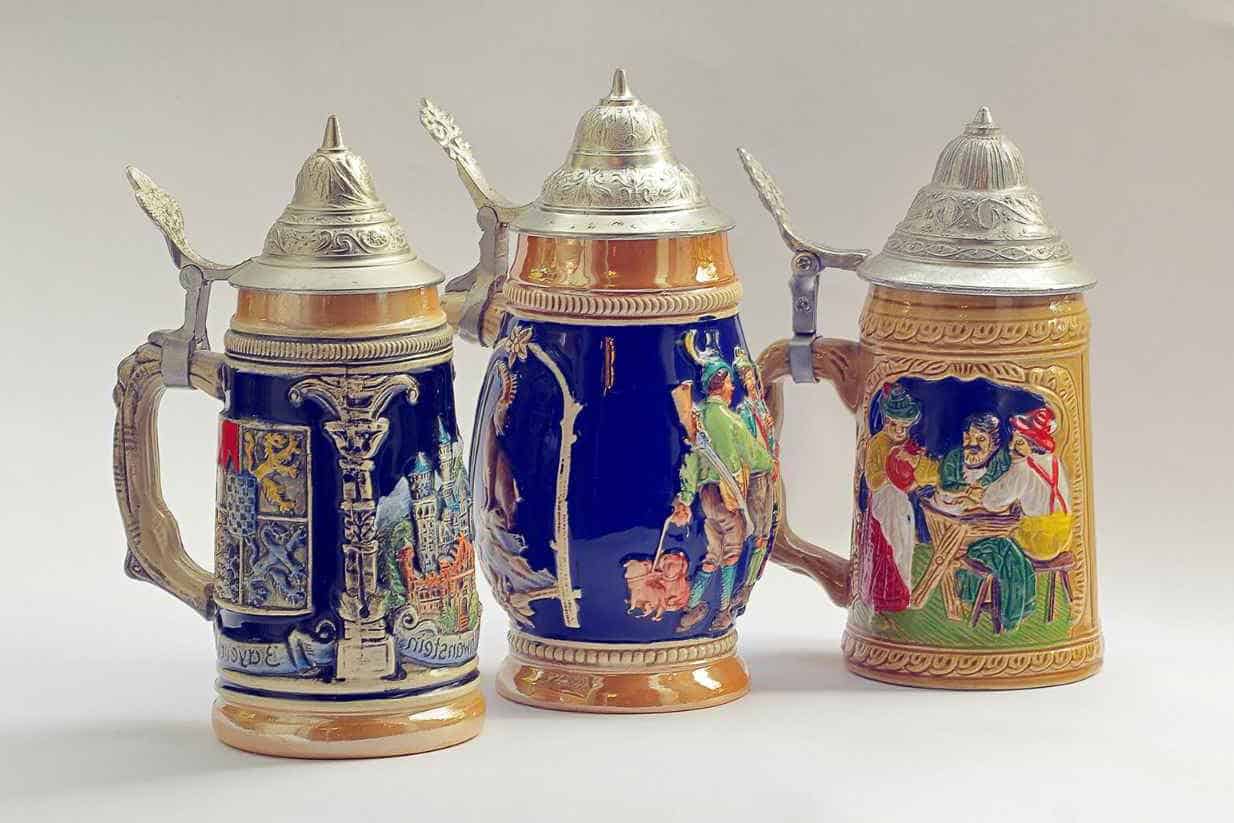
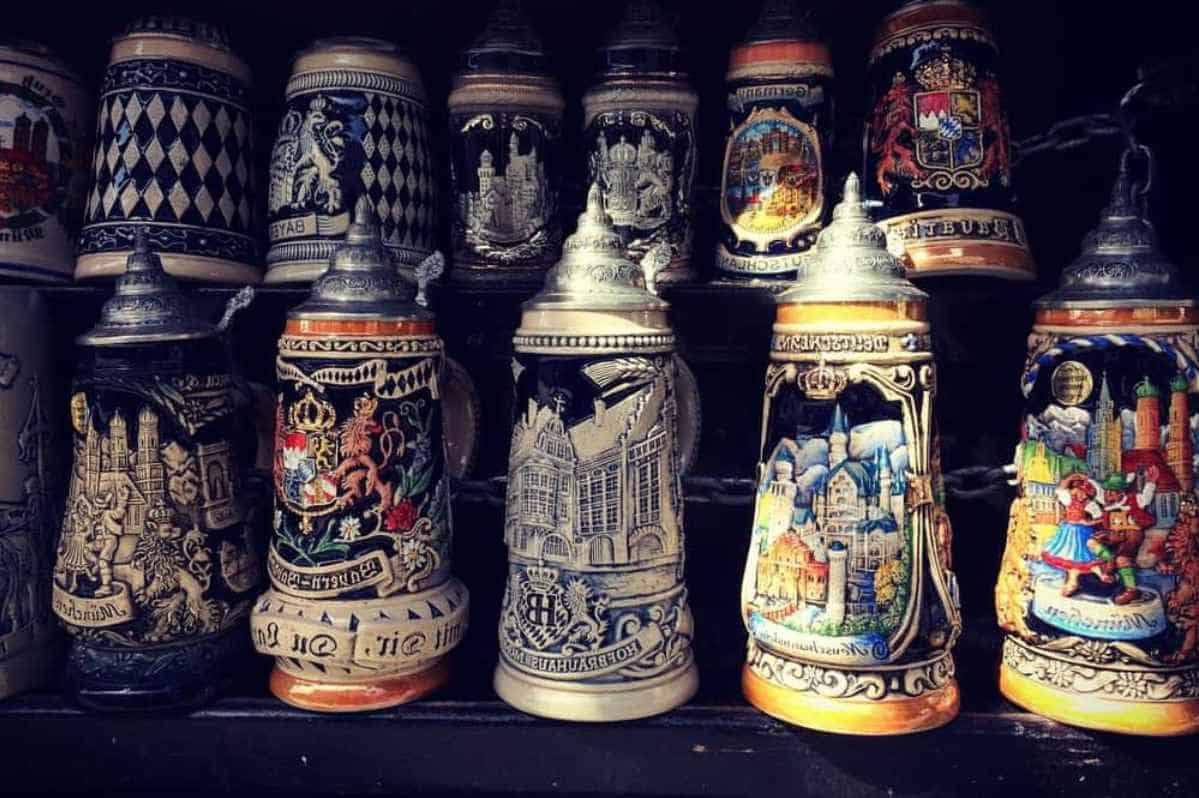
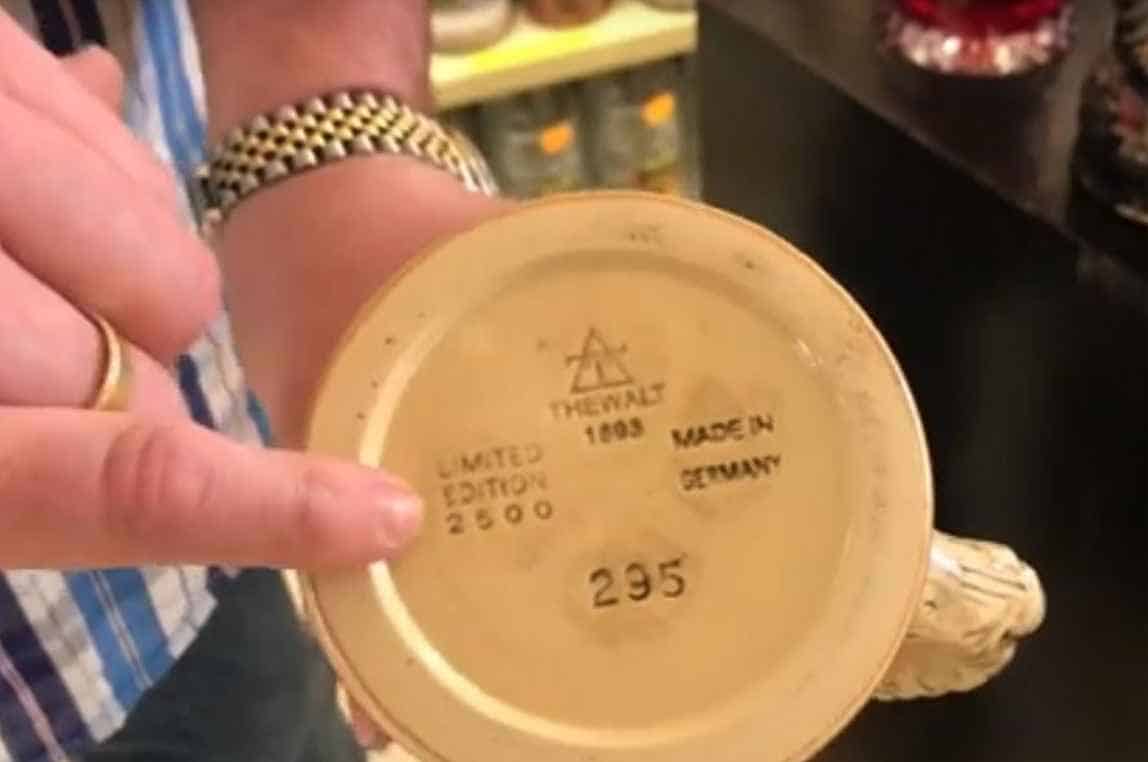
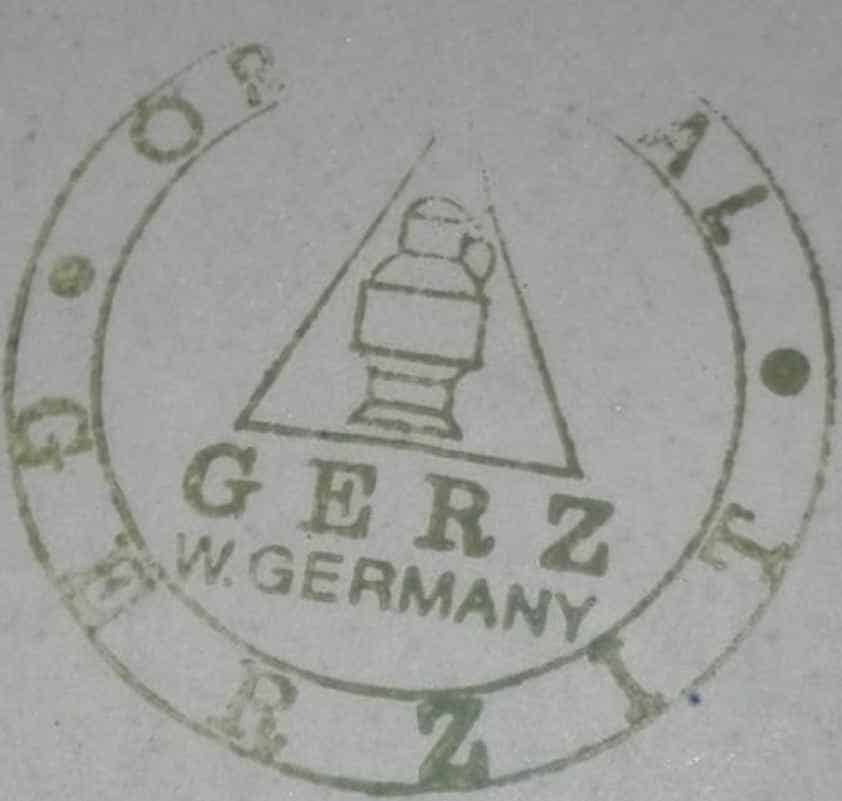
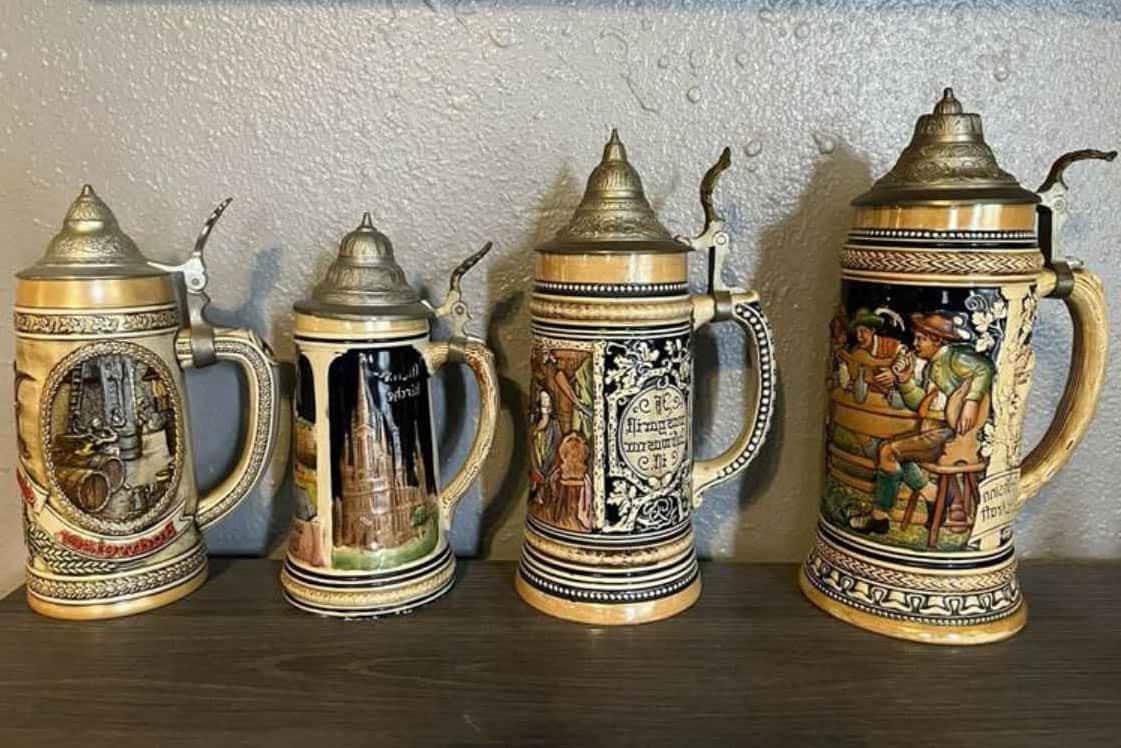
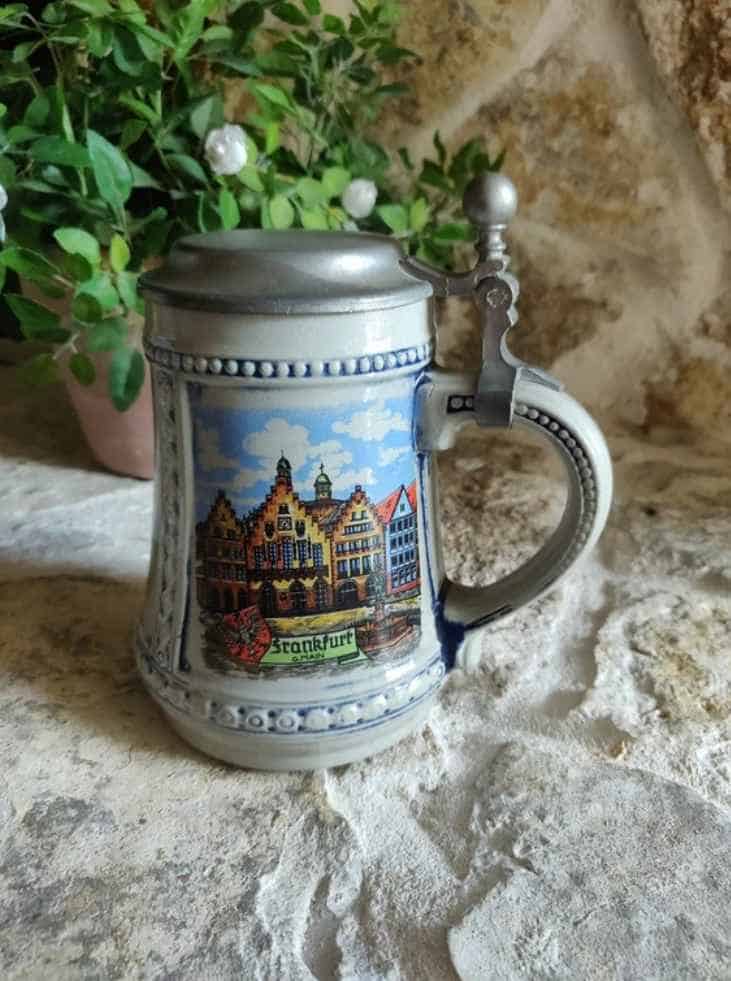
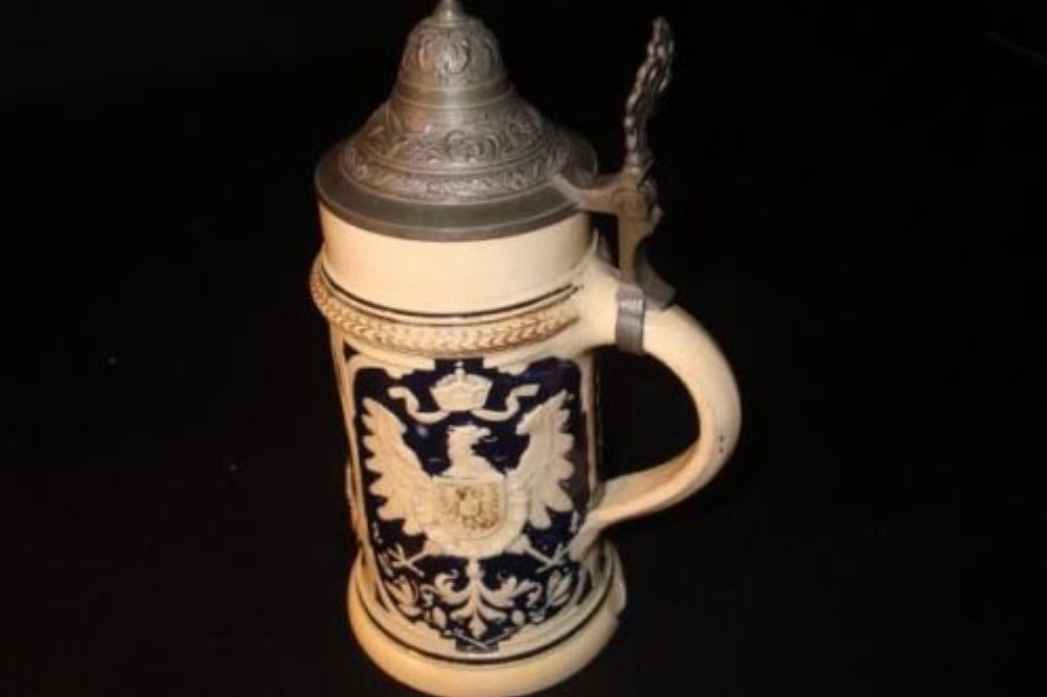
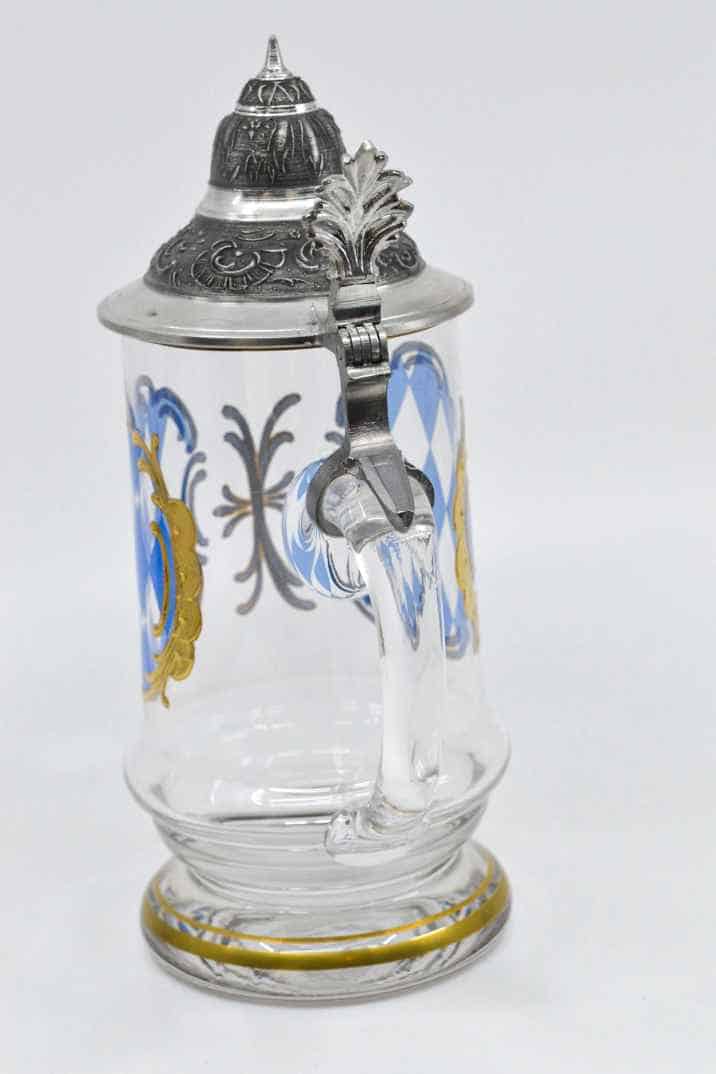
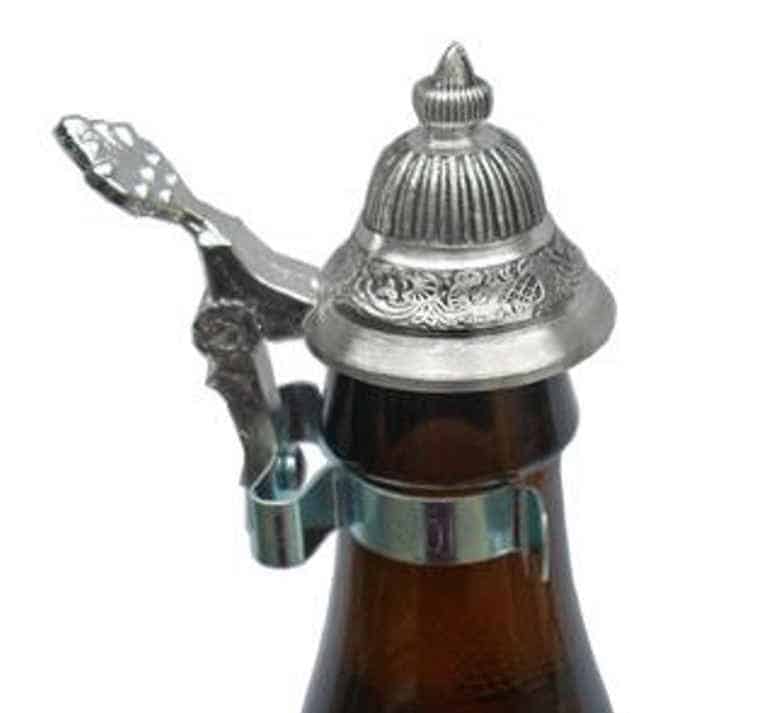
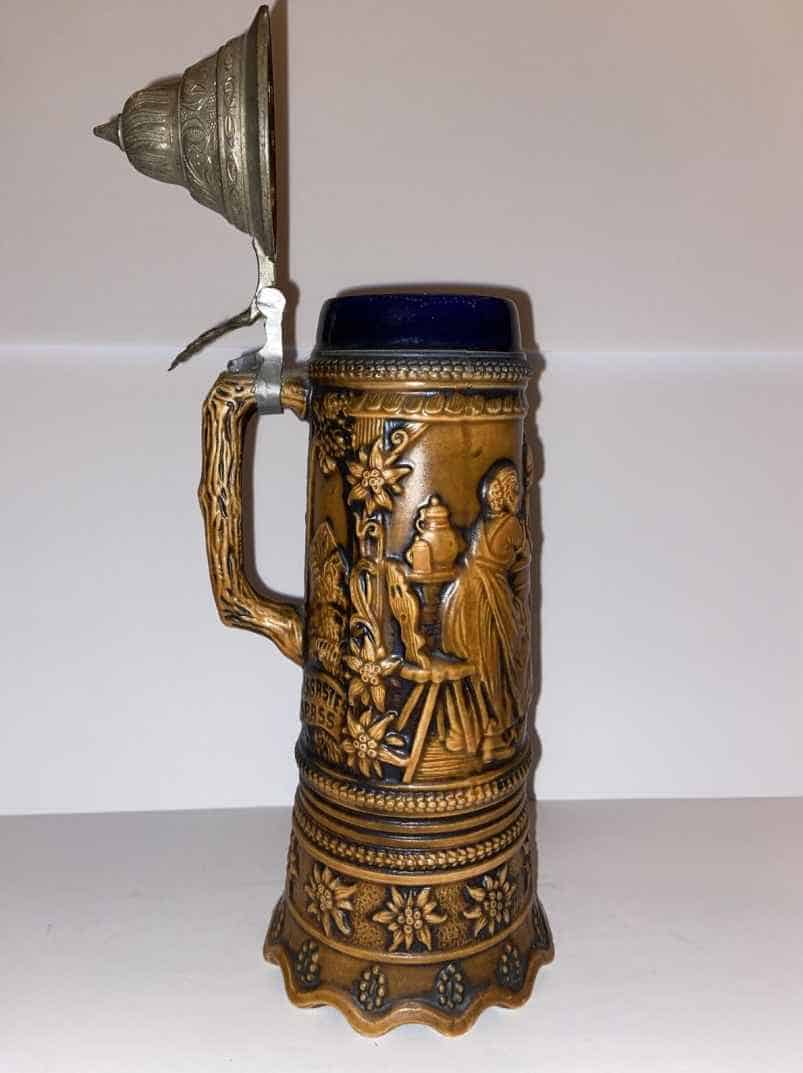
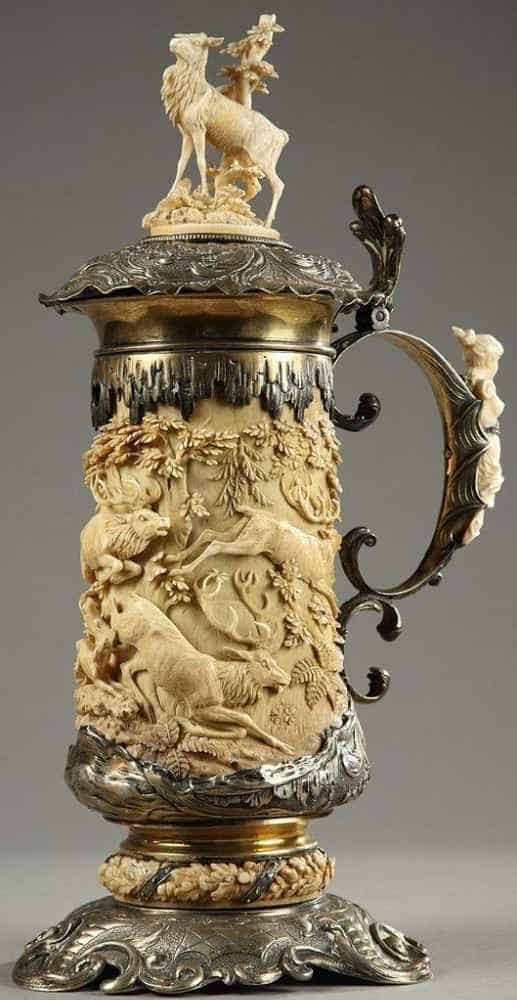
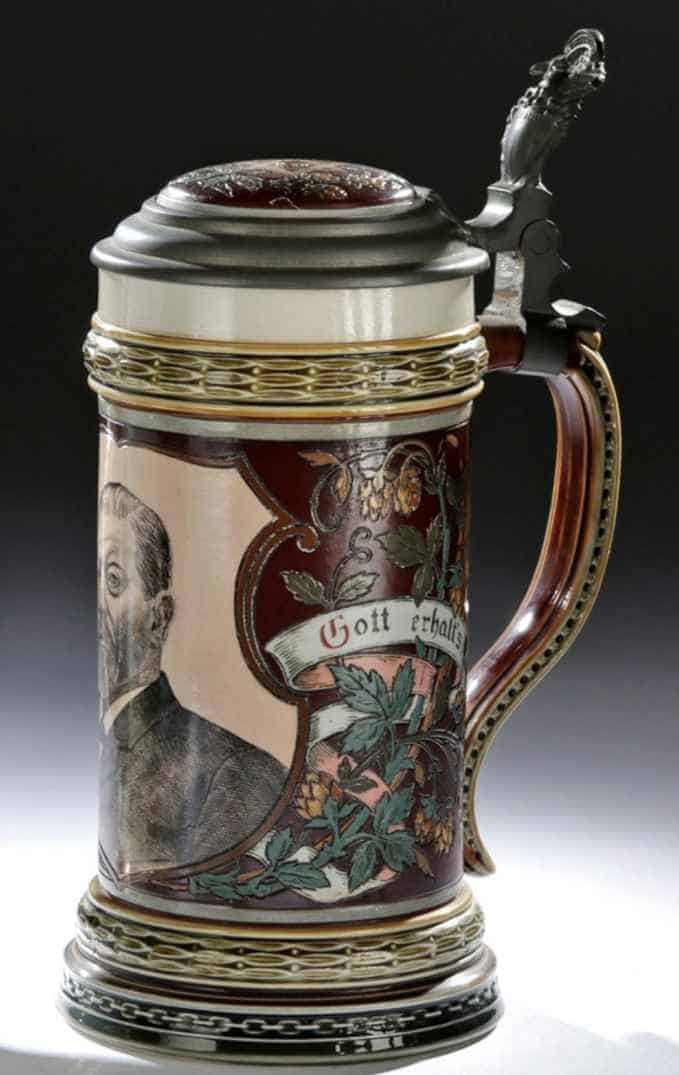
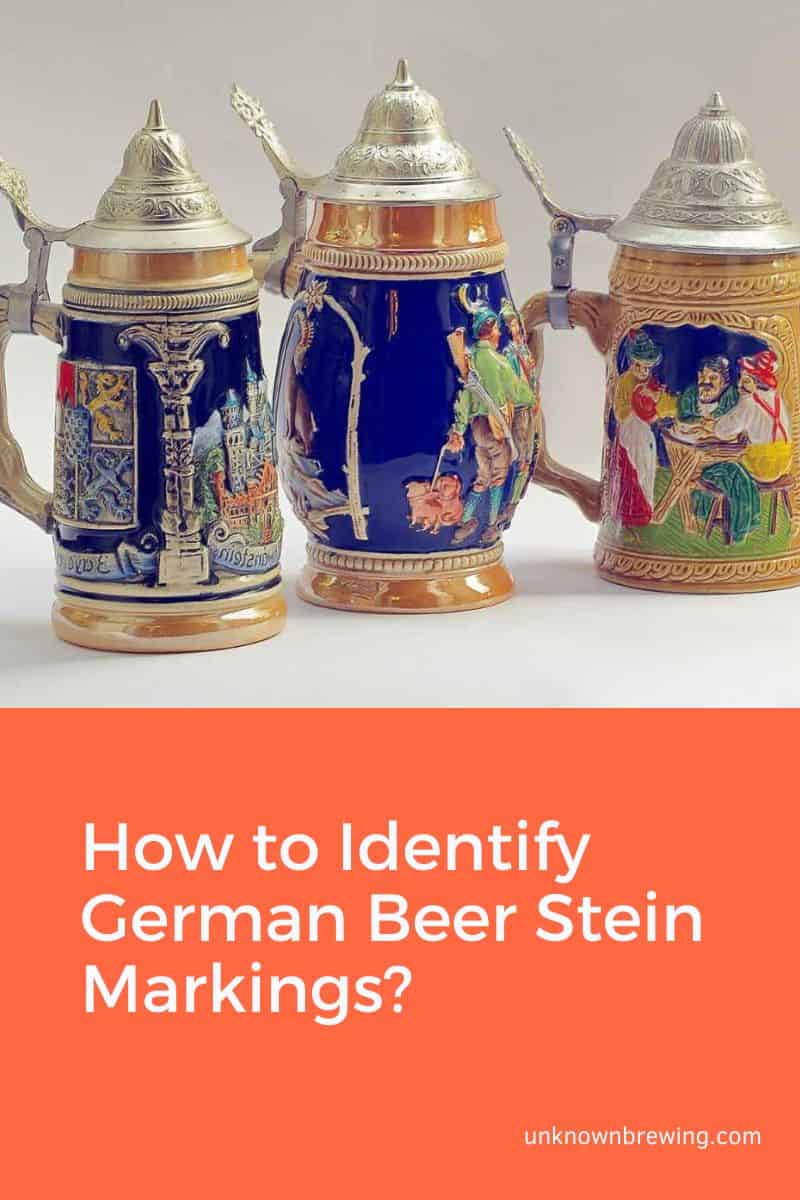
Greetings, I have Thewalt, 1202, in blue, number 1 on base. The number 76 inside the pewter lid. Might you know what these two numbers mean? Thank you.
Hi Rosa,
The “1” on the base likely signifies the volume of the stein in liters, indicating that it has a capacity of 1 liter. As for the “76” inside the pewter lid, it could possibly represent the year of manufacture, suggesting the stein was produced in 1976. However, this is speculative as not all manufacturers used this dating system, and it could also be a part of another identification system that the manufacturer uses.
Have a stein with one marking in the base. When holding up to the light you see a lady sitting with one leg up. The top is a single mold. On top is what appears to be a solder in horse back. The handle has the Weimar eagle. Inscribed on lid is “ ES LEBE. DER RESERVEMANN”. All around the stein is what appears to be a story with soldiers in uniforms that looks like very old Weimar helmets with plumes. Also no guns they are carrying lances. Any ideas?